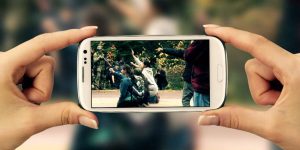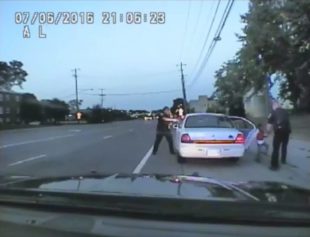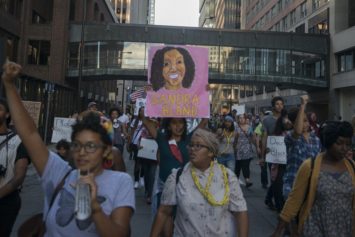As of late, the daily news cycle has been clogged with reports of deadly police encounters between law enforcement officials and people of color. But even before a story hits the news, never-ending loops of amateur video showing Blacks being killed at the hands of police are posted to social media for the world to see.
Aside from the graphic videos, bigoted rhetoric often spewed by right-wing politicians like Donald Trump only magnify the pressing issues of race relations in America. But as images of police brutality and overall mistreatment of African-Americans become more visible, white people’s perceptions of racism are being challenged in ways they haven’t been before.
“Now they’re taping it, and it’s harder to stay away,” 53-year-old special education teacher Becky Deen Tai said of the blatant racial bias often witnessed in police shooting videos. “I didn’t have to think about the problem because I didn’t have to see it. Now it’s in front of me.”
In the wake of numerous officer-involved shootings, social media has played a large role in the increased visibility of police encounters and the fact that African-Americans are still facing an onslaught of challenges when it comes to racial equality. This visibility has since forced white people to confront the issue of modern-day, systemic racism head-on, with no room for denial.
“I feel insanely guilty about everything,” music teacher Alanna Mensing told the Chicago Tribune. “I feel guilty that it’s not white people who are getting shot. It’s always Black people.”
According to the publication, the influential role of police violence videos mimics that of the TV news footage that helped shape white public opinion of the 1960s-era Civil Rights Movement. Images of Black Americans being attacked by police dogs and knocked to the ground by powerful water hoses shocked white families across America while bringing much-needed attention to the mistreatment of Black people. TV coverage of the the Vietnam War had a similar effect.
The shift in white perceptions of racism are becoming more apparent as an increasing number of white people are seen marching in Black Lives Matter protests and staging demonstrations aimed at bringing awareness to racial injustice. In fact, the predominately white delegation from the state of Wyoming could be seen sporting t-shirts in support of the anti-police brutality movement at last week’s Democratic National Convention.
For some, the shift has been more subtle as white Americans work to gain a deeper understanding of the Black experience.
Patricia Wudel, the white director of a hospice center for the homeless, said she realized her perception of the African-American experience was far too limited when she ate breakfast with a few colleagues following the acquittal of George Zimmerman in 2013.
“I said, ‘I can’t believe they let that guy off,’ ” Wudel recalled. A Black woman seated next to her had tears rolling down her face and responded. “I always knew he would.”
“In that instant, I realized that her response surprised me, and I knew my worldview was too small,” Wudell said. “And I knew I had to make room and to talk to people.”
The 63-year-old executive director was also compelled last year to attend the funeral of Freddie Gray, the Black man who suffered fatal spinal cord injuries while in the custody of Baltimore police.
Many white Americans remain biased in their racial views, but the Chicago Tribune reports that a number of recent polls show increasing support in giving Black Americans parity with whites. For example, a 2015 Washington Post poll found that 53 percent of whites were in favor of changes necessary to ensure equal rights for Black people. That number jumped from 39 percent just before the 2014 shooting death of Michael Brown, the publication reports.
Despite the increased support for racial equality, the topics of biased hiring practices, Black Lives Matter and equal protection under the law are still hot-button issues on which Blacks and whites remain divided. Atlanta Black Star cited a 2015 PBS/Marist poll on these same issues that affect opinions on race and equality. For instance, 72 percent of Black respondents polled said job opportunities were not equal, while a little over half of the white respondents (52 percent) agreed. In the case of equal protection under the law, the poll found that only 46 percent of white respondents felt that Black people weren’t treated equally by the law; a whopping 87 percent of Black people polled agreed that the law did not treat African-Americans and whites equally.
Sylvia Darrow, 79, describes herself as a supporter of the police who is “sick and tired of hearing the term” white privilege thrown around. To show her support for law enforcement, Darrow attended a community forum designed to facilitate discussion between police and Black residents.
“We need to squelch some of this perception that the police are brutal and they’re mistreating people of color,” she said.
But after hearing over a dozen African-Americans detail their harrowing experiences with police, she had a change of heart. According to the Chicago Tribune, Darrow helped organize a raffle designed to raise funds for more community meetings in which African-Americans and police officers could talk with one another.
“I guess I do have the sense that maybe we do need to have more dialogue,” she said.



